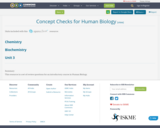
This resource is a set of review questions for an introductory course in Human Biology.
- Subject:
- Anatomy/Physiology
- Biology
- Life Science
- Material Type:
- Homework/Assignment
- Date Added:
- 12/03/2018

This resource is a set of review questions for an introductory course in Human Biology.
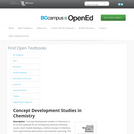
"Concept Development Studies in Chemistry" is an on-line textbook for an Introductory General Chemistry course. Each module develops a central concept in Chemistry from experimental observations and inductive reasoning. This approach complements an interactive or active learning teaching approach.
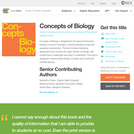
Concepts of Biology is designed for the introductory biology course for nonmajors taught at most two- and four-year colleges. The scope, sequence, and level of the program are designed to match typical course syllabi in the market. Concepts of Biology includes interesting applications, features a rich art program, and conveys the major themes of biology.
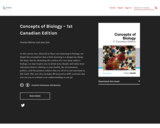
Short Description:
In this survey text, directed at those not majoring in biology, we dispel the assumption that a little learning is a dangerous thing. We hope that by skimming the surface of a very deep subject, biology, we may inspire you to drink more deeply and make more informed choices relating to your health, the environment, politics, and the greatest subject that are all of us are entwined in, life itself. This text also includes 80 interactive H5P activities that you can use to evaluate your understanding as you go.
Long Description:
In this survey text, directed at those not majoring in biology, we dispel the assumption that a little learning is a dangerous thing. We hope that by skimming the surface of a very deep subject, biology, we may inspire you to drink more deeply and make more informed choices relating to your health, the environment, politics, and the greatest subject that are all of us are entwined in, life itself. This text also includes 80 interactive H5P activities that you can use to evaluate your understanding as you go.
In the adapted textbook, Concepts of Biology — 1st Canadian Edition, you will find the following units: Unit 1: The Cellular Foundation of Life Unit 2: Cell Division and Genetics Unit 3: Molecular Biology and Biotechnology Unit 4: Animal Structure and Function
Word Count: 274896
ISBN: 978-1-989623-99-2
(Note: This resource's metadata has been created automatically by reformatting and/or combining the information that the author initially provided as part of a bulk import process.)
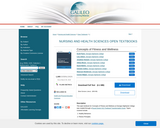
This open textbook for Concepts of Fitness and Wellness at Georgia Highlands College was created through a Round Seven ALG Textbook Transformation Grant.
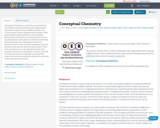
Conceptual Chemistry is a year-long course based on CK-12 OER instructional material and supplemented with limited commercially-available materials. The course is project-based, argument-driven inquiry. Each quarter begins with presentation of an intriguing phenomenon, followed by an essential question about the phenomenon, and a project centered on answering that essential question. Throughout the quarter, students conduct research and investigations to answer portions of the question. Each unit has a student "Task" at the end that serves as an assessment of the unit's concepts. At the end of each quarter, students assemble all of the unit tasks and synthesize a personal final project that answers the essential question in a personal context chosen by the student.
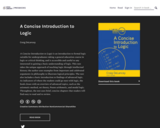
A Concise Introduction to Logic is an introduction to formal logic suitable for undergraduates taking a general education course in logic or critical thinking, and is accessible and useful to any interested in gaining a basic understanding of logic. This text takes the unique approach of teaching logic through intellectual history.
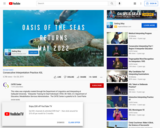
This video was originally created through the Department of Linguistics and Interpreting at Gallaudet University. "Interpreter Training for Deaf Individuals' CFDA. 84.160A, U.S. Department of Education, Rehabilitation Services Administration. The CATIE Center is grateful to Dr. Carol Patrie for making it available for inclusion in the GTC Resource Library.
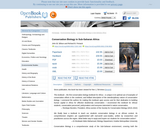
Conservation Biology in Sub-Saharan Africa comprehensively explores the challenges and potential solutions to key conservation issues in Sub-Saharan Africa.
Easy to read, this lucid and accessible textbook includes fifteen chapters that cover a full range of conservation topics, including threats to biodiversity, environmental laws, and protected areas management, as well as related topics such as sustainability, poverty, and human-wildlife conflict. This rich resource also includes a background discussion of what conservation biology is, a wide range of theoretical approaches to the subject, and concrete examples of conservation practice in specific African contexts. Strategies are outlined to protect biodiversity whilst promoting economic development in the region.

Students will review ASL idioms and use them in context. Students will take pieces of information (setting, time, activity, item) and create a story to share in American Sign Language.

Students will review ASL idioms and use them in context. Students will take pieces of information (setting, time, activity, item) and create a story to share in American Sign Language.
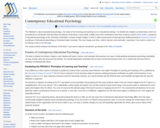
This Wikibook is about educational psychology—the study of how learning and teaching occur in educational settings.
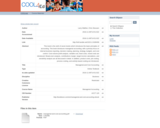
This book is the sixth of seven books which introduces the basic principles of accounting. This book introduces managerial accounting, with a primary focus on internal business reporting, decision making, planning, strategy, budgets, and cost control. Cost-volume-profit analysis, variable cost, fixed costs, mixed costs are introduced. Break-even analysis, contributions margin, target income calculations, and sensitivity analysis are all discussed in detail. In addition, product costs, job costing, process costing, and activity-based costing are introduced. Note this is copyrighted, but the PDF is freely available on Cool4ed and may be linked out to from the LMS.
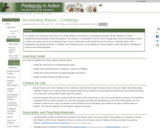
Accounting is the language of business. As a result students must grasp the vocabulary associated with the discipline to have a fundamental understanding of financial reporting. This activity is a combination of the five-card Cribbage game and the board game Bingo. It makes use of game theory as an alternate way to cover content that would typically be part of a lecture. Cribbingo fosters class participation by making learning fun. In addition, the Cribbingo lecture can be adapted to classes taught in many disciplines, including the sciences and world languages.
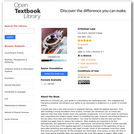
Criminal Law uses a two-step process to augment learning, called the applied approach. First, after building a strong foundation from scratch, Criminal Law introduces you to crimes and defenses that have been broken down into separate components. It is so much easier to memorize and comprehend the subject matter when it is simplified this way. However, becoming proficient in the law takes more than just memorization. You must be trained to take the laws you have studied and apply them to various fact patterns. Most students are expected to do this automatically, but application must be seen, experienced, and practiced before it comes naturally. Thus the second step of the applied approach is reviewing examples of the application of law to facts after dissecting and analyzing each legal concept. Some of the examples come from cases, and some are purely fictional. All the examples are memorable, even quirky, so they will stick in your mind and be available when you need them the most (like during an exam). After a few chapters, you will notice that you no longer obsess over an explanation that doesn’t completely make sense the first time you read it—you will just skip to the example. The examples clarify the principles for you, lightening the workload significantly.
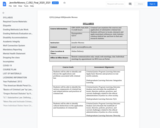
Centered on the OER text Criminal Law, this is a comprehensive and detailed syllabus for Criminal Law at Western Oregon University for the course Criminal Law. The course examines the sources and application of substantive criminal law. Students will learn to locate, interpret and apply municipal ordinances, state statutes, common federal law and how to find and research statutes.
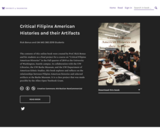
Short Description:
The contents of this online book were created by Prof. Rick Bonus and his students as a final project for a course on “Critical Filipinx American Histories” in the Fall quarter of 2019 at the University of Washington, Seattle campus. In collaboration with the UW Libraries, the UW Burke Museum, and the UW Department of American Ethnic Studies, this book explores and reflects on the relationships between Filipinx American histories and selected artifacts at the Burke Museum. It is a class project that was made possible by the Allen Open Textbook Grant.
Word Count: 18767
(Note: This resource's metadata has been created automatically as part of a bulk import process by reformatting and/or combining the information that the author initially provided. As a result, there may be errors in formatting.)
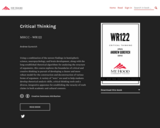
MHCC - WR122
Short Description:
Using a combination of the newest findings in hemispheric science, neuropsychology, and brain development, along with the long-established rhetorical algorithms for analyzing the structure of arguments, this course explores the boundaries of critical and creative thinking in pursuit of developing a clearer and more robust model for the construction and deconstruction of various forms of argument. A variety of "texts" are used to help students develop rhetorical analysis skills, critical thinking tools and a diverse, integrative apparatus for establishing the veracity of truth claims in both academic and cultural contexts.
Long Description:
This project was funded by the MHCC Foundation OER Grant Program and published by MHCC Library Press. MARC record available at the end of the book.
Word Count: 10313
(Note: This resource's metadata has been created automatically as part of a bulk import process by reformatting and/or combining the information that the author initially provided. As a result, there may be errors in formatting.)
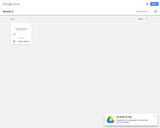
It is our hope that the successful student who completes a class using all or some of this text will have improved skills with application inside the discipline of philosophy, but also with application to work in other disciplines within academia. Our ultimate goal, however, is to help people develop techniques which support curiosity, open-mindedness, and an ability to collaborate successfully with others, across differences of experiences and background. Our dream is to help people “put their heads together.”
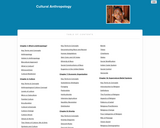
An introductory cultural anthropology textbook covering all major topics and produced by Lumen Learning.